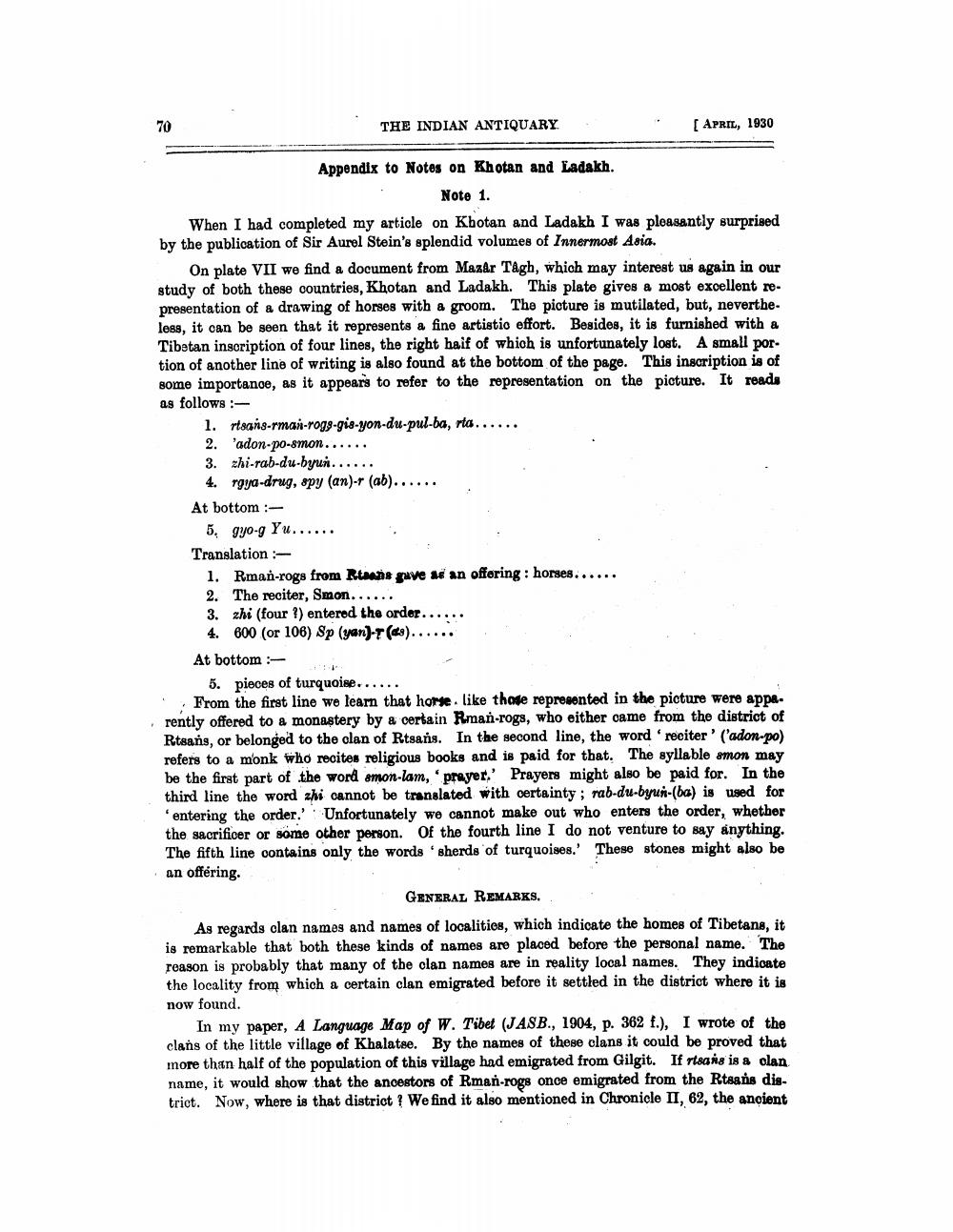________________
70
THE INDIAN ANTIQUARY
[ APRIL, 1930
Appendix to Notes on Khotan and Ladakh.
Note 1. When I had completed my article on Khotan and Ladakh I was pleasantly surprised by the publication of Sir Aurel Stein's splendid volumes of Innermost Asia.
On plate VII we find a document from Mazar Tagh, which may interest us again in our study of both these countries, Khotan and Ladakh. This plate gives a most exoellent representation of a drawing of horses with a groom. The picture is mutilated, but, nevertheless, it can be seen that it represents a fine artistio effort. Besides, it is furnished with a Tibetan inscription of four lines, the right haif of which is unfortunately lost. A small por. tion of another line of writing is also found at the bottom of the page. This inscription is of some importance, as it appears to refer to the representation on the picture. It reads as follows :
1. rtsans-rman-rogg-gis-yon-du-pul-ba, rta...... 2. 'adon-po-smon...... 3.zhi-tab-du-byui......
4. rgya-drug, spy (an)-- (ab)...... At bottom :
5. gyo-g Yu...... Translation -
1. Rman-rogs from Rtaans gave as an offering : horses...... 2. The reciter, Smon.... 3. zhi (four ?) entered the order......
4.600 (or 106) Sp (yan)-T («)...... At bottom
5. pieces of turquoise......
From the first line we learn that horse. like those represented in the picture were apparently offered to a monastery by a certain Rman-rogs, who either came from the district of Rtsans, or belonged to the clan of Rtsans. In the second line, the word 'reciter' ('adon-po) refers to a monk who recites religious books and is paid for that. The syllable smon may be the first part of the word amon-lam, prayer.' Prayers might also be paid for. In the third line the word zhi cannot be translated with certainty ; rab-du-byus-(ba) is used for
entering the order. Unfortunately we cannot make out who enters the order, whether the sacrificer or some other person. Of the fourth line I do not venture to say anything. The fifth line contains only the words sherds of turquoises. These stones might also be an offering.
GENERAL REMARKS.
As regards olan names and names of localities, which indicate the homes of Tibetans, it is remarkable that both these kinds of names are placed before the personal name. The reason is probably that many of the clan names are in reality local names. They indicate the locality from which a certain clan emigrated before it settled in the district where it is now found.
In my paper, A Language Map of W. Tibet (JASB., 1904, p. 362 f.), I wrote of the clans of the little village of Khalatee. By the names of these clans it could be proved that more than half of the population of this village had emigrated from Gilgit. If rtsans is & olan name, it would show that the ancestors of Rman-rogs once emigrated from the Rtsans district. Now, where is that district ? We find it also mentioned in Chronicle II, 62, the ancient




